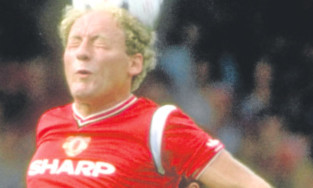
There were a number of factors in Davie Moyes losing his job at Manchester United, but possibly the biggest was the one he encountered on his first day as manager.
As someone who experienced what it is like to move to Manchester United albeit as a player, not a manager you don’t realise just how big the club is until you are actually part of it.
That might sound silly because we all know they are one of the biggest clubs in world football.
But until you are thrust into that spotlight, you just never quite know how you are going to deal with it.
When I signed from Spurs, I’d been with a big London club, had won a UEFA Cup medal with Ipswich Town and had played for Scotland at the World Cup Finals.
I admit, however, I struggled to deal with the demands of being a Manchester United player. The fans expect you to win every single game, and to win them convincingly. Many have found it too much to handle, and I certainly did.
Maybe it was the same for Davie. Maybe the job was a lot bigger than he first envisaged, and replacing Sir Alex probably made it 10 times tougher than it would be for the guy who will now takes over from him.
Davie made mistakes. Certainly, the results just weren’t good enough and he will know that himself.
One of the reasons for that has to be the way he appeared to lose the dressing room or certainly senior figures within it.
But he would have emptied those players out at the end of the season, regardless of their reputations.
That’s the one thing Sir Alex Ferguson made sure of throughout his 26-year reign at Old Trafford.
If a player crossed him, then they were out. They were shown the door and there are several examples Paul McGrath, Ruud van Nistelrooy, Jaap Stam and Roy Keane.
Those four and there were many more were all massive players for United and huge characters. But they all fell foul of Fergie. The end result in every case was they were forced out of the club.
There is no doubt Moyes encountered several players who didn’t buy into what he was trying to achieve at United, and there is no doubt he’d already have planned to get rid of them.
That might even have included the likes of Ryan Giggs and Rio Ferdinand. You just never know. But unfortunately for Davie, he never got the chance to do what Ferguson did regularly throughout his time at the club.
That was just one of many things which conspired against him, and I remain convinced he would eventually have turned things around.
All he needed was a good transfer window. Bring in the players he wanted and get rid of the players he clearly didn’t want, and United would have been back up there challenging for honours again.
Of course, now he won’t get that chance.

Enjoy the convenience of having The Sunday Post delivered as a digital ePaper straight to your smartphone, tablet or computer.
Subscribe for only £5.49 a month and enjoy all the benefits of the printed paper as a digital replica.
Subscribe